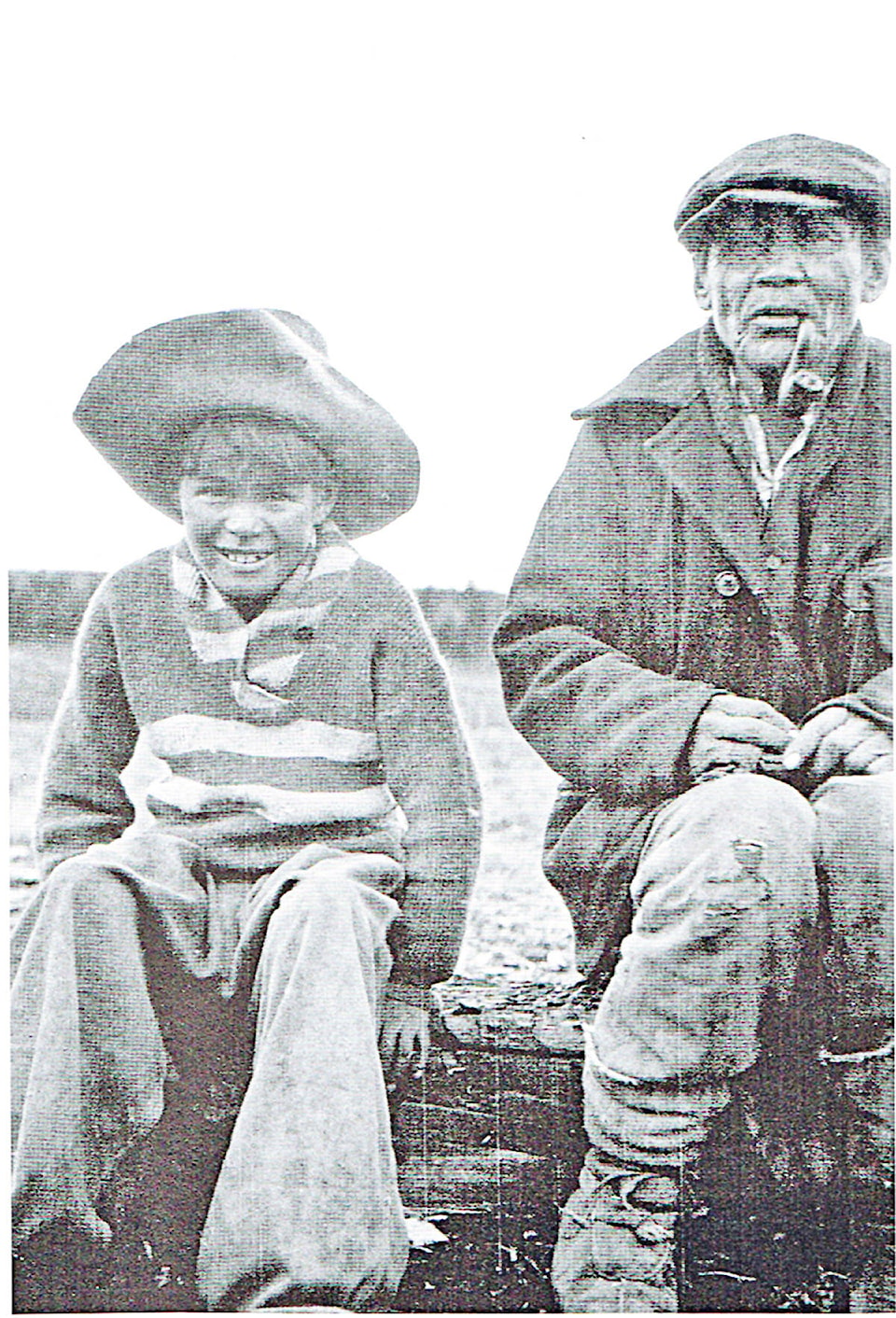By Sage Birchwater
Special to the Tribune
My book Chilcotin Chronicles has been on the BC Bestseller’s list for eighteen consecutive weeks since we launched it last April. As an author focusing on local history, it’s very gratifying and humbling when we can reach out and connect with readers beyond our region.
Chilcotin Chronicles is quintessentially a life work that began more than 40 years ago in Williams Lake. That’s when I met Dave and Nene Twan, and Dave introduced me to his mother Rosalie, then close to 100 years old. He still relied on his mother, who was part Dakelh, for traditional knowledge of plants and medicines.
Dave said his grandfather Charles Touin was a member of the Hudson’s Bay Company fur brigade before the colony of British Columbia was born. Charles was Metis from Montreal and Dave’s grandmother Cletses was Dakelh from ?Esdilagh. Dave’s dad, John Twan, was born at Fort Alexandria in 1853.
It is fitting then that the story of the Twan (Touin) dynasty is the first “people” story in my book.
Besides telling personal anecdotes about people in the region, Chilcotin Chronicles conveys a history of British Columbia told from the perspective of the Cariboo Chilcotin Coast. After living and working in this part of the world for more than four decades it suddenly dawned on me that the local tourism association had it right – the Cariboo Chilcotin Coast really is a regional entity. This regional autonomy existed when Alexander Mackenzie followed the Nuxalk Dakelh Grease Trail from Quesnel to the Central Coast in 1793 on his quest to find an overland route to the Pacific Ocean.
Before European contact the Nuxalk people of Bella Coola and the Dakelh people of the high interior plateau had a social and political alliance that dominated the landscape. As time progressed I had the opportunity to live and work in both communities, and could see firsthand how the social melding continues despite cultural differences that are as contrasting as the mountainous terrain itself.
The Chilcotin War of 1864 is another historic event I included in my narrative. A number of writers have attempted to describe this transformative moment in British Columbia history when the tables turned on indigenous domination of the landscape.
My sympathies lay with the Tsilhqot’in people and I needed to set the record straight.
While working with the Ulkatcho community in the early 1990s, we obtained a set of archival photographs taken by intrepid land surveyor Frank Swannell.
We brought these images to the Ulkatcho elders to identify the people portrayed in them. One photo of an old man and a boy caught our eye. Susie Squinas told us they were Young Guichon and Jimmy Guichon, members of her family from Tatla Lake.
Young Guichon was an old man when Swannell photographed him in 1927. The elders told us he witnessed the Chilcotin War at Nimpo Lake when Tsilhqot’in War Chief Lhats’as?in attacked the pack train of Alex McDonald and Peter McDougall in early May, 1864. They said McDonald and McDougall both had a hand in intentionally spreading smallpox two years earlier that devastated the Tsilhqot’in population across the plateau.
Theodor Harvey Valleau is another unique character I heard many stories about. In 1975 a friend and I bought a trapline down the West Branch Valley of the Homathko and one of the side creeks flowing into the river was named after him.
I was curious why a creek bore the name of an individual the local people had such disdain for. The people living in the West Branch refused to call it Valleau Creek, and always referred to it as Deer Creek.
Freight truck driver Wilf Hodgson gave me the only known photograph of Valleau. I’m not sure where he got it from, but he said Valleau bet someone two dollars he could swim his horse across a tumultuous section of the Chilko River.
This was a fitting image of the man who couldn’t get along with people but had an uncanny relationship with animals.
One of my challenges as a writer of local history, is to convey the essence of the region special to those of us who live here, to the greater audience of British Columbia and the world.
This fall we are setting up a series of slideshows in Victoria, Salt Spring Island and possibly the Lower Mainland and Vancouver Island. My challenge is to tailor the slideshows to connect with the people outside our region.
It’s always a bit tricky casting the pearls of our region into the realm of the great unwashed. Having Chilcotin Chronicles dancing about on the bestsellers list is encouraging to say the least.
I’m very indebted to the people across our region who generously entrusted me with their stories. It is ironic that this year of the wildfire has brought so much attention to our usually out-of-the-way part of the world.
